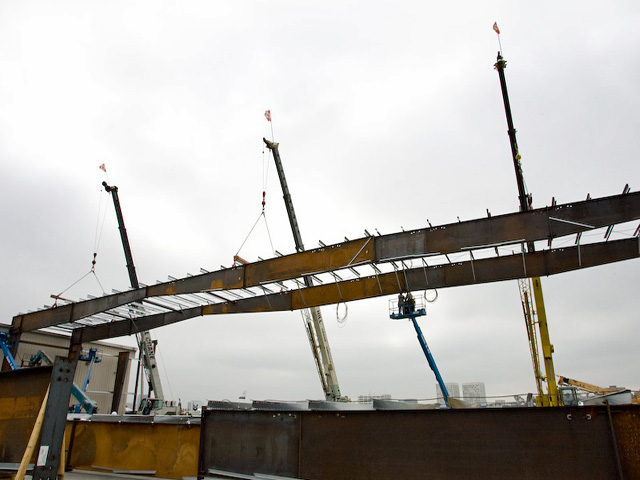Metal Building Company

How Turn Up Technology is Benefiting Building And Construction
Tilt up construction is quick confirming itself to be a cost-effective choice to business building with steel girders. Tilt up modern technology includes putting concrete right into types onsite as well as doing it flat (as pieces) as opposed to up and down. We see in this article exactly how this technique to setting up business facilities is beneficial.
Tilt up derives its name from this horizontal versus upright putting of concrete, complied with by a "tilting up" of the components after healing. The system for the pours is either the piece floor of the structure itself or a short-term spreading surface area that is created separately. All kinds of architectural members can be fashioned this way, consisting of walls, columns, as well as panels.
The procedure requires removing the kinds after the participants have been enabled to treat, and connecting rigging to them. A crane after that raises each item right into an upright placement as well as moves it right into its long-term location. Certainly, the casting pad or piece flooring needs to be healed thoroughly first, as well as precautions have to be taken to stop the put elements from bonding to the pad.
The developing of the panels and columns is virtually the like for an upright put, but with some added benefits. It is maybe easier to embed insulation and rebar grids when the type remains in a straight placement, however what is especially less complex is the formation of windows and door openings. Essentially, the whole structural style is realized all at once.
The material for the forms can be practically anything, from fiberboard or dimensional lumber to excellent quality plywood, from aluminum to steel. It is relatively uncomplicated to embed studs and also attachment plates within the kind to facilitate interior construction. In fact, any kind of forms can be molded right into the concrete.
The building and construction of rebar grids mimics what is provided for putting driveways. Workmen build the grids within the form as well as use plastic spacers to place them into a taken care of location. To stop the types from bonding with the pad or piece the surfaces are sprayed with a chemically reactive bond breaker; this wraps up the essential prep work, and also after filling up the forms with concrete, they are allowed to cure.
One of the greatest benefits of the tilt up technique is that it is carried out onsite at the last structure place. Comparison this with prefabrication, which is performed at a few other area, such as at the supplier's facility, where there is available the appropriate tooling as well as equipment. To erect the prefabricated architectural elements, the service provider initially needs to carry them from the remote center to the building website, which can require substantial prices.
However, contractors normally use steel as well as various other metals to construct premade industrial buildings as opposed to concrete, as well as making use of steel materials presents its own advantages. There is therefore a trade-off in between the prefab method and tilt up technology that service providers need to evaluate. Prefabrication often tends to supply more adaptability than tilt up, whereas tilt up has the advantage of everything being created onsite.
From an economic standpoint, the transition factor comes for buildings with 50,000 square feet of room, with prefab steel construction obtaining advantage for frameworks smaller sized than this quantity, as well as turn up triumphing for ones larger than this. The implication is that the taken care of prices related to making use of tilt up technology are dramatically more than its scalable costs. Certainly, advanced cranes, rigging, and also various other tools are needed for raising and placing wall surfaces that can weigh as much as 150 tons.
Therefore, when you have actually paid to get all that devices to the website, the step-by-step expenses of raising size are a lot less significant. Another, much less obvious benefit derived from the tilt up approach is that nearly all the wall surfaces are crafted as load-bearing ones. This suggests that interior walls typically work as shear walls for enhanced stiffness. Such outcomes, along with various other elements reviewed over, demonstrate how tilt up modern technology is profiting building and construction. tenant improvement contractors